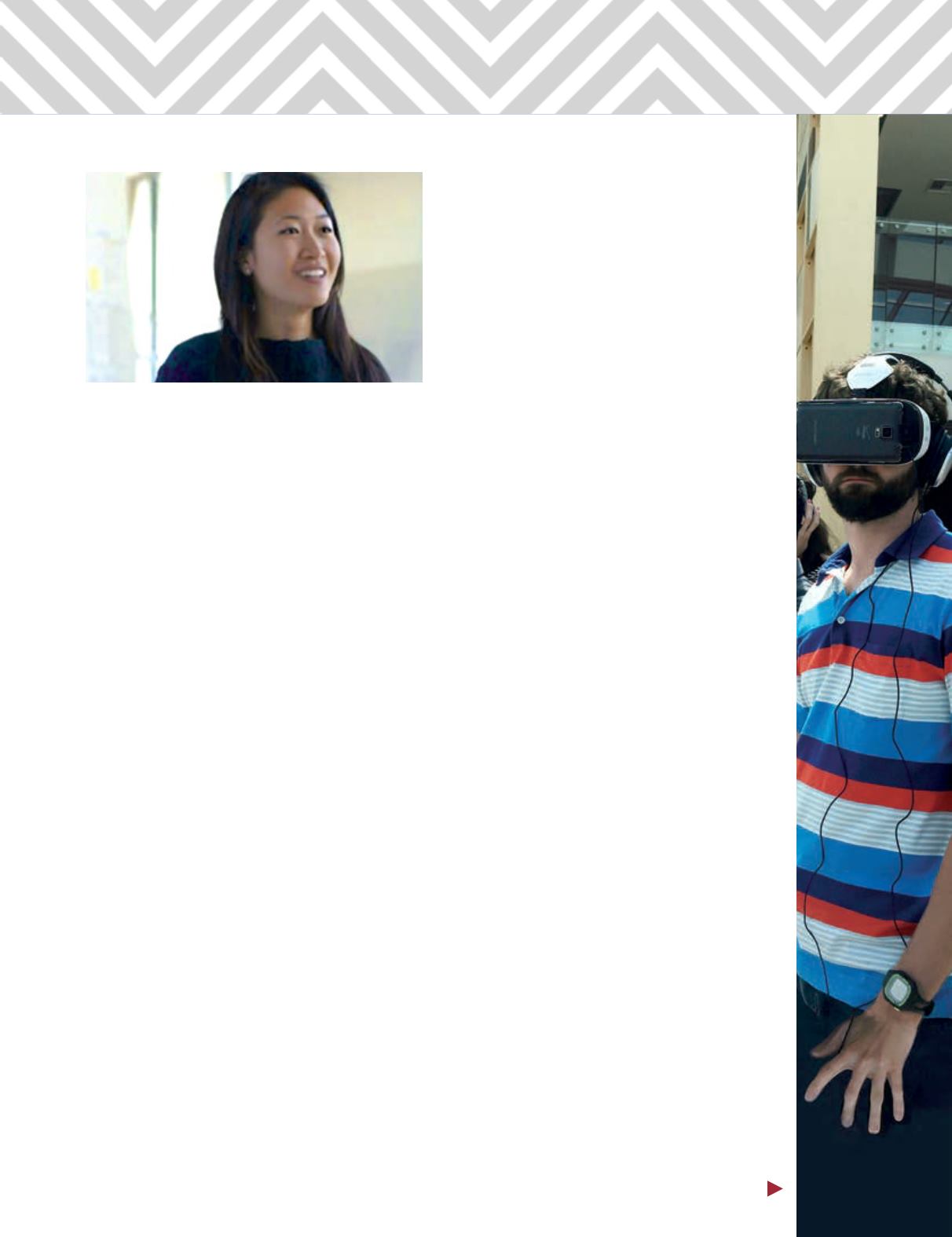
29
H
technology companies such as Dropbox now occupy. The
next big challenge for Ahn? Designing the new Dropbox
world headquarters, set to open in the spring of 2016.
She may be the only person within the company capable
of succeeding: the building needs to represent the brand,
the culture, the
ethos
of Dropbox, she feels, and only a
handful of employees have seen the company evolve
from its infancy, to global prominence. The building will
also be a plan for the future, one for which Dropbox is
constantly trying to innovate
How Low Can They Go?
Ask former Microsoft Manager
Brooke Lloyd ’99
about
the youthful techies of Seattle and he’ll tell you the story
of a former colleague.
“Her four-year-old daughter was working on a laptop
in her kindergarten class,” he says. “It was just like, ‘This
is insane.’”
Lloyd, who spent nearly four years at Microsoft
before taking on a principal role at Microsoft founder
Paul Allen’s philanthropic offshoot,
Vulcan
,
Inc
., has
spent the majority of his career focusing on business
development and marketing. Still, certain things can’t
go unnoticed, no matter what your department or
where you happen to work, one of which is the distinc-
tion between the way companies such as Microsoft have
cultivated software engineers and coders in the last
several years. The younger ones, says Lloyd, are not
only ready but also eager to dive in from the start.
Perhaps even more eager are the recruiters scouring
school campuses for students, ready to grab them after
– and sometimes well before – graduating.
“There’s still maybe 20-30 top technical programs
and all the major tech companies are all over those
universities,” Lloyd says, referencing Microsoft, Google,
and Facebook as three primary players. “Anyone who’s
doing computer science, or even doing a minor, there’s
heavy recruitment going on.”
And it doesn’t stop there. For its own part, Microsoft
has gone as far as developing programs like KODU, a
game lab community that lets kids create games on the
PC and Xbox. Since its launch in 2009, KODU has visited
the White House, teamed up with groups such as DigiGirlz,
stirred academic research, and been the subject of a
book. These, in part, are the things dictating the future,
according to Lloyd.
“It’s pretty wild,” Lloyd says. He makes reference to
the story of his colleague and her daughter, perhaps
indicative of what tech world has inspired. “She showed
me a picture and I was like, ‘What?!’ The laptops are
bigger than you are!”
what it was like to work there.” Initial skeptics included
the company’s CEO and co-founder, who believed shoot-
ing videos of programmers could hardly be fun, and
therefore a waste of time and resources. Similar Bay
Area tech-companies seemed to be in agreement:
there were no videos of company culture, seemingly no
windows into the behind-the-scenes world of startups.
Ahn searched startups around San Francisco to find
footage as potential guides for her project. “We couldn’t
even find an example video we liked,” she recalls.
Still, Ahn pushed ahead. Understanding her own
limitations when it came to producing, she connected
with formmate and video, graphic design, and creative
expert
Eric Chang ’06
. Their raw footage, edited in a
way to emphasize what it truly meant to work at Drop-
box, turned out to be a huge success. The inside reviews
propelled Ahn to contact TechCrunch, one of the Internet’s
most popular sources of information for technology news.
One Hollywood-style pitch later, TechCrunch featured
the video prominently on the site, and the views came
quickly. Ahn reflects on the many roles she assumed
during this single project: “I was a marketer, a PR repre-
sentative, a creative, a recruiter.”
Ahn next made the
natural
transition to company
architect, redesigning the Dropbox cafeteria. The
company, says Ahn, bears similarities to Google in its
emphasis on employee happiness, knowing its corre-
lation to productivity and success. Having proven her
aptitude to take a project and infuse it with creativity
while simultaneously building the Dropbox brand,
Dropbox gave her the go-ahead on the cafeteria project.
Only after the redesign, when employees and visitors
preferred the cafeteria as a meeting site, did she know
she had succeeded.
With Dropbox now supporting more than 1,000 em-
ployees, Ahn continues to take on projects for which she
needs to apply an “experience-based design.” Ahn has
reinvented herself with each new challenge, showing a
versatility that speaks to the ever-changing landscape
Glara Ahn ’06, one of the first 100 employees at Dropbox
Brooke Lloyd ’99, Vulcan, Inc.


